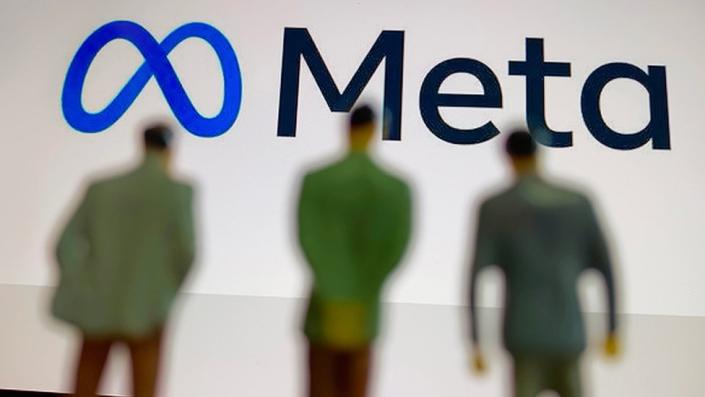Layoffs across the tech industry, including at companies like Twitter, Meta and Amazon, have affected a significant number of Indians working in the US who have visas such as the H-1B. California-based journalist Savita Patel speaks to workers forced to face the prospect of returning to India if they cannot find another job.
Surbhi Gupta, an Indian engineer who has been working in the US since 2009, was surprised to be fired by Meta this month. “I performed well at work,” she says.
On November 9, Meta, owner of Facebook, Instagram and WhatsApp, announced it would cut 13% of its workforce – the first mass layoffs in the company’s history, with 11,000 employees losing their jobs.
“None of us slept that night,” says Ms Gupta. “At 6 AM I got the email. I couldn’t access my computer or the office gym. It felt like a breakup.”
Ms. Gupta is probably a familiar face to Indians. Winner of the 2018 Miss Bharat-California contest, she was last seen on the Netflix show Indian Matchmaking.
Now she is one of thousands of well-educated and skilled migrant workers laid off by US tech companies this month.
Most of them work in the US because of the HI-B visa. It is a non-immigrant visa that allows companies to employ foreigners for up to six years in positions for which they have been unable to find U.S. employees.
It also allows holders to apply for permanent residency in the US and purchase real estate in the country.
Ms Gupta says she has worked very hard for “more than 15 years” to build a life in the US.
Her visa now depends on finding her next job.
More than 120,000 tech workers worldwide have lost their jobs due to budget cuts by U.S. tech companies, according to the Layoffs.fyi website, which tracks tech job losses.
While companies have not released India-specific figures, San Jose-based immigration attorney Swati Khandelwal says “it has hurt the Indian community particularly hard.”
“We saw an increase in calls for consultations,” she says. “Everyone is concerned, even those who have not been fired fear they will be [fired] later.”
For Indian tech workers, the layoffs mean not only looking for new work, but also finding employers who are willing to help them continue their work and pay the associated legal costs.
“If a new employer cannot transfer your visa application within 60 days, the remedy is for people to leave [the US] and go back to work after paperwork is completed,” says Ms Khandelwal.
“But the practical aspect is that people get stuck in India because not many visa stamping appointments are available in consulates,” she says.
Waiting times for a visa appointment at US consulates in India have reached 800 days in some cases.
Therefore, the layoffs came as an unwelcome surprise to Indian workers.
Sowmya Iyer, a lead product designer at ride-sharing app Lyft, says she was part of a team that had taken “internal steps to preserve the company’s fiscal health.”
But Ms. Iyer was among hundreds laid off from the company this month. “We didn’t expect it to hit us,” she says.
The mass layoffs feel like a “technical pandemic,” she explains. “Both my friend and his wife lost their jobs on the same day. Everyone is in the same boat – reach out, exchange condolences.”

Ms Iyer says she has to pay back student loans and has not told her parents back home in the western Indian state of Gujarat about her resignation.
In the US on an O-1 visa – granted to individuals of “extraordinary ability and achievement” – Ms. Iyer says she is confident she will find employment.
Her resume lists degrees from prestigious design schools in India and the US and the O-1 visa allows her to stay on for 60 days after finishing a job.
The US WARN (Worker Adjustment and Retraining Notification) law provides a buffer before the 60-day visa clock begins. WARN requires employers to give affected employees 60 days’ notice during a mass layoff.
“To ensure my status here and help me find an employer, my former employers gave me a month’s notice, so currently I have three months,” she says.
But for many Indians, even 90 days is a tight timeline and has turned any plans they had upside down. Many have families to support, others have thousands of dollars in loans to pay off.
Naman Kapoor had borrowed money to pay for his master’s program at New York University.
He was hired by Meta as an engineer after multiple rounds of applications, but was fired seven weeks later. “I got the termination email at 8am [local time] on November 9,” he says.
“The whole idea is that an American education includes work experience,” he says. “It’s very expensive to study in New York. I worked to make a living.”
Mr. Kapoor is in the US on an F-1 (OPT) visa that puts him out of work for only 90 days while in the country.
“Meta offered me four months’ wages as severance pay,” Kapoor explains. “But I only have three months left in which to find my next job or go back!”
Finding a new job in this environment will be difficult, says Ms Gupta. “It’s almost December – hiring will be slow because of the holiday season.”
In the wake of the layoffs, Ms Khandelwal says a community has been formed to support people in crisis. Colleagues and employers have spread information online and referred prospects.
“I made Zeno, [a platform] to help affected workers find jobs,” said Abhishek Gutgutia, a Bay Area tech. “There have been 15,000 visits so far.”
Mr Gutgutia says his LinkedIn post on Zeno has been viewed almost 600,000 times. “Approximately 100 candidates, 25 companies and 30 mentors have applied. Several immigration attorneys have also volunteered [their services].”
Vidya Srinivasan, a Meta contributor, says she saw a “heartwarming outpouring of support from Meta peers” in her efforts to compile a “Meta Alumni Guide” for those whose lives changed overnight changed. Her online posts have been seen by more than a million people, she says.
Amid such hopes, Indian migrant workers remain in suspense until they find their next job.
“I’m tired of being tested,” says Ms Gupta. “How much stronger do I have to be?”.

